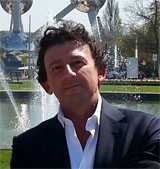The best way to create the future
In recent years, the global socio-economic system has faced an increasing number of variables and conflict of interests, introducing diversified and interconnected pressures and challenges, whose political choices have required solutions in a complexity that is difficult to deal with. In fact, complex systems are characterized by the intrinsic difficulty of making accurate predictions about their evolution: complex systems can also show sudden changes, faster than the ability to adapt and restore the system and its governance. In this context, science and knowledge are often asked to predict the future and provide solutions, but the ability to predict the future is a difficult task and often the dominant variables driving the system are not those related to science...
The term "foresight" usually refers to the ability to predict what will happen or be necessary in the future, and consists of an activity mainly used to support decisions and plan actions. There are many different approaches that can be adopted in the foresight exercises, which can deal, with different pertinence, four main aspects: creativity, competence, evidence (modeling) and interaction. In general these approaches follow two main methodologies: forward-looking and back-casting. The first (forward) starts from the current situation, the evidence, using models and expert suggestions to understand how it could evolve in the future. It is a process "insurance-type", which tries to identify which future scenarios can be more or less probable according to some choices. This approach could suffer from a possible competition among the involved actors who aim at influencing political decisions or investments in favor of their own interests. The second (back-casting) instead starts from a "desired" scenario, that is, assigns the objective and tries to identify the possible paths capable to enable its success, involving creative and expert people from different disciplines. This approach is in principle not competitive among the participants, as the scenario is imposed and most solutions are unknown. It is clear that in having an active role and being independent from external conditioning, the back-casting foresight is the most indicated approach to be adopted. .
CNR has launched a Science and Technology Foresight Project (www.foresight.cnr.it). P.F. Moretti coordinates the Group Materials. In spring 2016 he proposed the idea of "Stem Materials", and invited top-scientist to debate a possible feasibility for implementing the concept. The same idea has been later included within the Norvegian Government proposal for a European FET Flagship Initiative. P.F. Moretti has presented the concept of "Stem Materials at the Ocean Week 2018 at NTNU (https://www.ntnu.edu/web/ocean-week/program) and to contribute to the reflections as a panelist in a round table of the "Italian Futuristi" (http://www.instituteforthefuture.it/eventi/secondo-incontro-futuristi-italiani-2018/).
Many concepts and results are summarized in the paper on BMC materials, edited by Springer Nature and referred below, and in P.F. Moretti @ ULB 2019
P.F. Moretti has designed and organized many workshops for backcasting and identifying research results, including one in Brussels on March 15, 2018 , to brainstorm with experts about future seas and oceans' missions and funds for research.
P.F. Moretti et al. 2018, Fictional Newspaper for backcasting Oceans
P.F. Moretti 2018, Background document for Stem Materials
P.F. Moretti 2018, A tool for updating strategies
P.F. Moretti et al. 2019, STEM materials: a new frontier for an intelligent sustainable world
